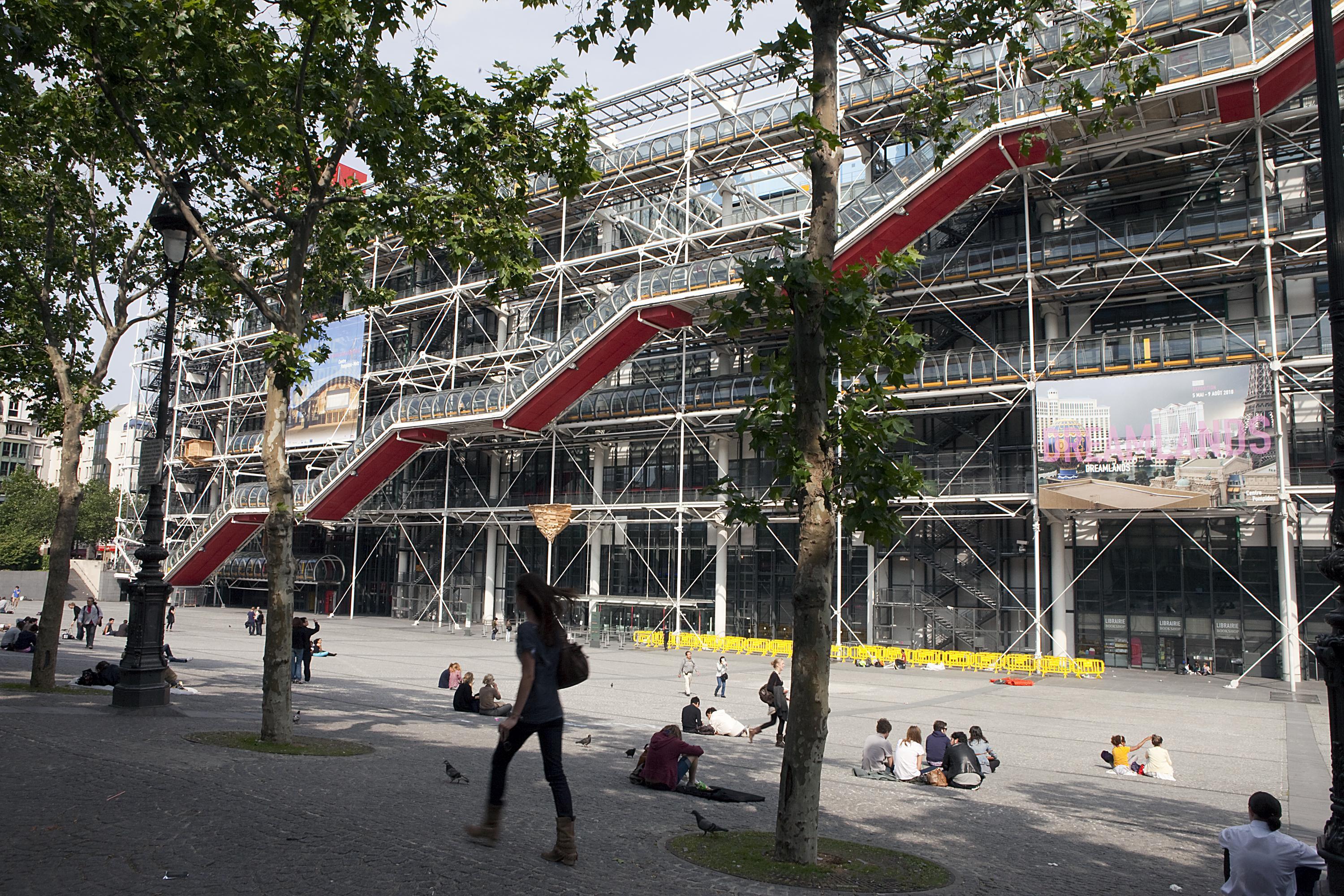The bizarre architecture of this odd building provokes such strong emotions that it’s easy to forget that there is something inside. Believe it or not, President Pompidou searched far and wide to find an architect. In 1971, an international design competition was held with entrants from 49 countries, and the winners were the Italo-British design team of Renzo Piano and Richard Rogers. Their concept was to put the support structure and transport systems on the outside of the building, thereby liberating space on the inside for a museum and cultural center. The result was a gridlike exoskeleton with a tubular escalator inching up one side, and huge multicolored pipes and shafts covering the other. To some, it’s a milestone in contemporary architecture; to others, it’s simply a horror. Either way, it’s one of the most visited structures in France.
The Pompidou is much more than an art museum. Its over 100,000 sq. m (1,076,390 sq. ft.) of floor space includes a vast reference library, a cinema archive, bookshops, and a music research institute, as well as a photography and children’s gallery, a performance hall, and areas for educational activities.
The actual museum, the Musée National d’Art Moderne, is on the fourth and fifth floors. Getting there is half the fun as you glide up the exterior escalators. Since the collection is in constant rotation and temporary exhibitions are a huge draw, it’s impossible to say what you are likely to see on your visit, but the emphasis is generally on works from the second half of the 20th century, with a good dose of surrealism, Dada, and other modern movements from the first half. This is not “pretty” art, but art that is designed to make you think. It might make you think about heading straight for the exit, but if nothing else, there are works here that will surprise you and get your juices flowing. Pieces range from relatively tame abstracts by Picasso and Kandinsky to Andy Warhol’s multiheaded portrait of Elizabeth Taylor (“Ten Lizes”) to a felt-wrapped piano by Joseph Beuys. Video installations are often highlighted, as well as new artists.
Just outside is the Atelier Brancusi, where the sculptor’s workshop has been reconstituted in its entirety; in his will, Brancusi left the workshop’s contents to the museum on the condition that every sculpture and object be displayed exactly as it was found in his studio on the day of his death.
Don’t miss the view from the top floor—a wonderful opportunity to gaze at the city’s higgledy-piggledy rooftops. Even if you don’t visit the museum, you can buy a ticket to the top for 5€. Or you can admire it from within Georges (http://restaurantgeorgesparis.com), the museum’s oh-so-chic rooftop cafe/restaurant, which flaunts decor just as avant-garde as the artworks inside the museum. The staff are a little snooty, however.
Note: Even behemoths require makeovers. At time of writing, the Centre Pompidou was set to close for renovations towards the end of 2024 until 2030, so many of its 120,000 works will go on show in multiple exhibitions all across France.






 About our rating system
About our rating system


